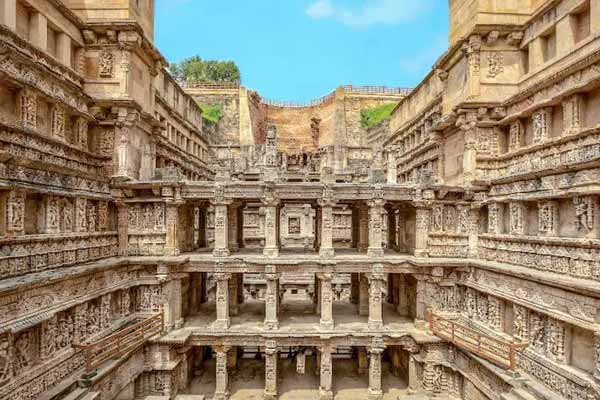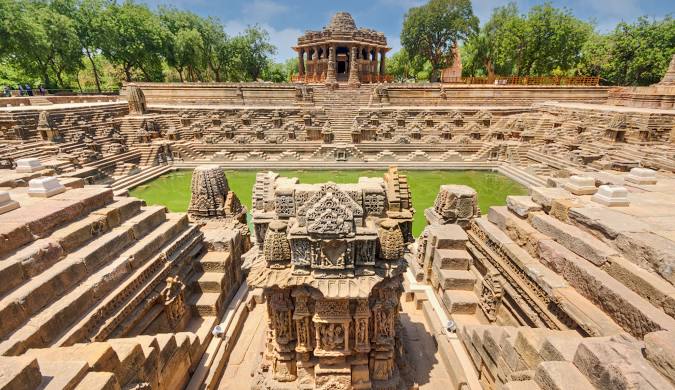
Discovering Patan (Rani ki Vav): A Journey Through Gujarat’s Timeless Stepwell
Traveling is often about ticking off monuments from a bucket list, but sometimes, a place grips your heart and lingers long after you’ve left. That’s exactly what happened to me at Patan Rani ki Vav, Gujarat’s breathtaking stepwell. I had seen countless photos online, but being there—feeling the cool air wafting up the centuries-old stone, hearing the whispers of history—was a different story. Let me take you through my journey and, hopefully, inspire you to write your own chapter in this magnificent setting.
The Allure of Patan (Rani ki Vav): My First Glimpse
When I first arrived in Patan, a historic town tucked away on the banks of the Saraswati River, I was brimming with anticipation. The sun was gentle that morning, and the faces I passed in the street were welcoming, as if inviting me to share in their city’s secrets.
The UNESCO World Heritage Site of Rani ki Vav is at the heart of Patan, both geographically and culturally. Its name means “The Queen’s Stepwell”, and the moment I laid eyes on its ornate, terraced depths, I felt a wave of awe—this wasn’t just architecture; it was a story carved in stone. The stepwell, built in the 11th century by Queen Udayamati in memory of her husband, King Bhimdev I, is a testament to love, engineering, and artistry.
Top Attractions at Rani ki Vav and Around Patan
1. The Stepwell’s Marvelous Architecture
Descending the steps, time seemed to slow down. Each level unfolded like a grand stage, adorned with more than 500 principal sculptures and a thousand minor ones. Intricate carvings of gods, goddesses, and celestial dancers seemed almost alive. I spent ages just wandering, gazing at the detailed reliefs—my neck craning, my camera busy, my heart full.
2. The Underwater Shrine
At the far end of the stepwell sits a small, subtle shrine to Vishnu, submerged during the monsoons. Local guides told me stories of how, in ancient times, the well would fill with water, creating a mystical reflection of the carvings above—a sight I can only imagine, but hope to witness someday.
3. Sahastralinga Talav
Just a short walk from Rani ki Vav lies Sahastralinga Talav, the ancient reservoir. Once, it was spectacularly grand, with thousands of Shiva lingams. The place retains a calm, spiritual energy. The breeze and open sky offered me a welcome respite after my deep dive into history—and a perfect spot for a picnic.
4. Patola House & Weaving Workshops
Patan is justly famous for its Patola sarees—some of the most exquisite handwoven textiles in India. I visited a local family-run workshop (the Salvi family’s museum is highly recommended) and watched artisans at work. Their patience and skill left me humbled. I couldn’t resist picking up a vibrant silk scarf.
5. Jain Temples of Patan
The old town is dotted with beautifully carved Jain temples, their marble interiors glowing in the late afternoon sun. I wandered the quiet lanes, stopping to chat with shopkeepers and sip chai. Every corner of Patan felt touched by history.
Also Just 60 km from Rani ki Vav, the Modhera Sun Temple is another must-visit heritage site in Gujarat.
Local Food & Culture in Patan
One of my favorite parts about travel is food, and Gujarat never disappoints. After exploring Rani ki Vav, I ducked into a small eatery recommended by a local auto driver. For lunch, I savored steaming, fluffy dhokla, tangy khandvi, and a generous helping of sweet shrikhand served with warm puris. Street vendors offered chilled sugarcane juice (a lifesaver after the midday heat!).
If you have time, seek out a traditional Gujarati thali—endless plates of curries, dals, pickles, sweets, and breads. The warmth of the people, their pride in local crafts and flavors, is infectious. Evenings are equally charming, with folk music echoing through courtyards and the pleasant clink of teacups.
Budget Travel Tips for Patan (Rani ki Vav)
- Public buses connect Patan with Ahmedabad and Mehsana; trains are also available, making it easy on the wallet.
- Guesthouses and budget hotels near the bus stand offer decent, clean rooms (I paid under ₹800/night for a cozy stay).
- Eat at local canteens for authentic taste and value.
- Stay hydrated and pack light — comfort makes travel better.
- Book a guided tour at Rani ki Vav to bring the carvings and stories alive.
Best Months to Visit Patan (Rani ki Vav)
I visited during winter, and I can’t recommend it enough—late October through early March are the sweetest months. The air is crisp, the sun is gentle, and wandering the stone corridors of Rani ki Vav in cool weather is pure joy. Summers can be harsh, and the monsoon brings lush beauty but also slippery steps, so plan accordingly.
If you’re keen on cultural experiences, try to catch the annual Patan Utsav, when the city bursts into color with music, dance, and craft fairs.
FAQs About Patan (Rani ki Vav)
- How do you get to Patan (Rani ki Vav)?
The nearest airport is Ahmedabad (approx 125 km away). Patan is well-connected by train and bus. I took a train from Ahmedabad—a relaxing 2.5-hour journey. - What are the entry fees and timings?
Indian citizens pay ₹40, foreigners ₹600. Open 8am–6pm daily. Try arriving early to beat the crowds and sink into the peace of the place. - How much time do you need?
I’d recommend at least 2-3 hours exploring Rani ki Vav, and more if you visit the nearby reservoir and old town. - Is it suitable for family travel?
Absolutely! The site is safe, clean, and fascinating for all ages.
Final Thoughts: The Spirit of Patan (Rani ki Vav)
As the sun dipped lower and shadows lengthened over the stepwell, I found a quiet spot to sit and reflect. I thought about the generations who had come before me—builders, queens, pilgrims, travelers—each leaving something behind. There’s an old saying here: “Time stands still at Rani ki Vav.” I think I finally understood what it meant. Travel isn’t just about seeing new places, but about letting those places change something inside you.
If you’re planning a journey through India, or simply want to glimpse the magic of its past, Patan (Rani ki Vav) is a chapter you shouldn’t skip. Go with an open heart, a curious mind, and maybe a notebook to jot down your own stories.
